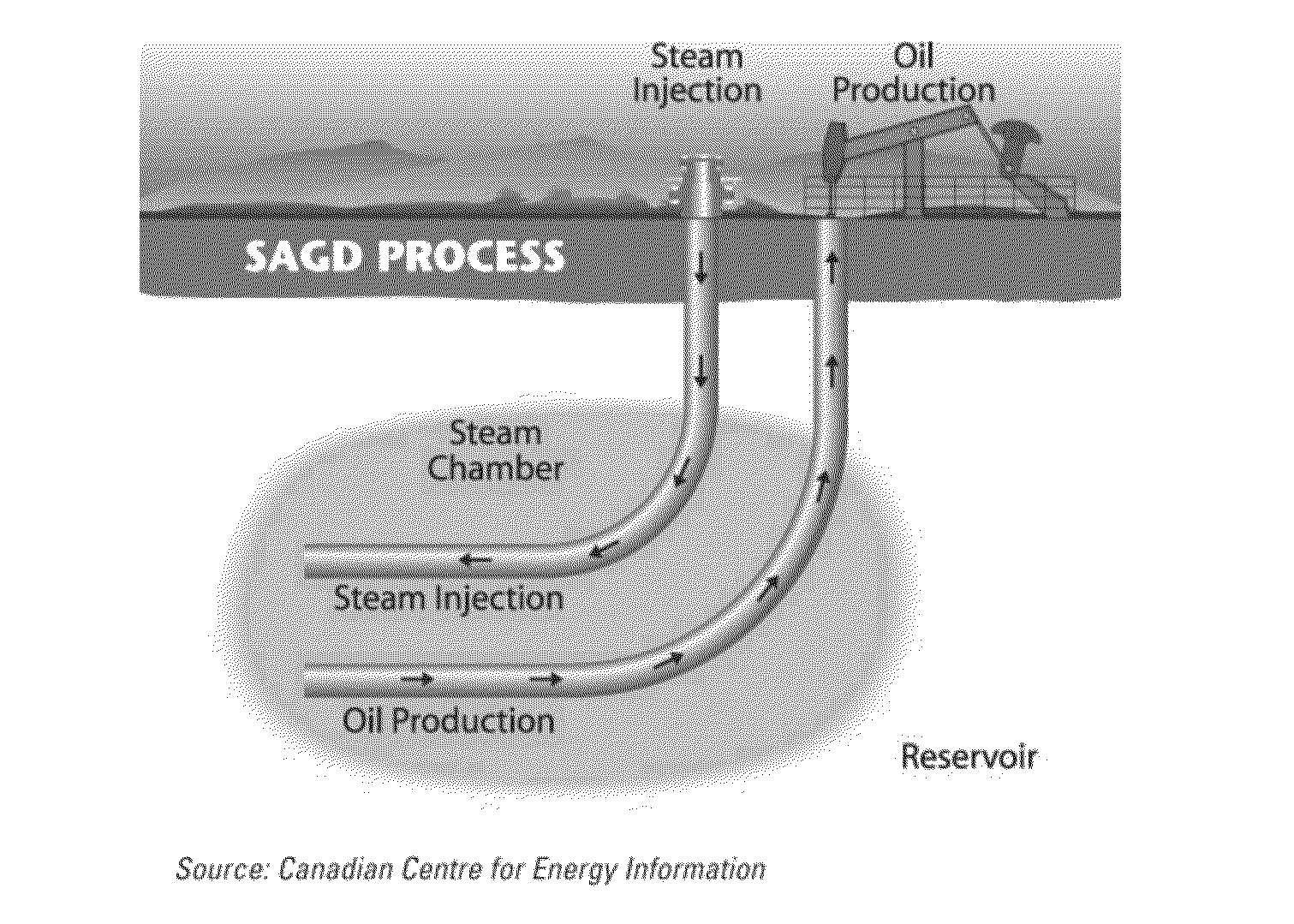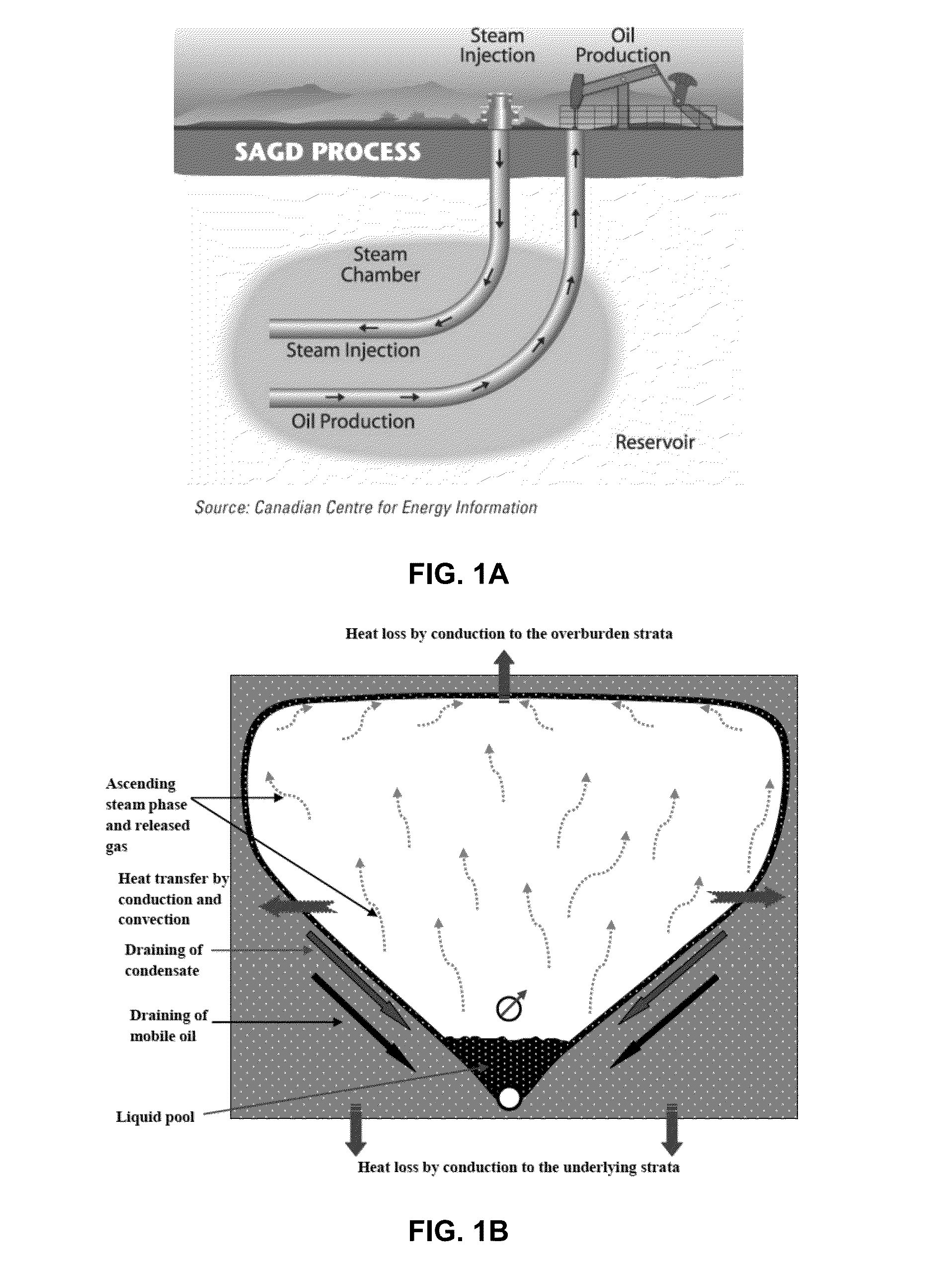Heat scavenging method for thermal recovery process
- Summary
- Abstract
- Description
- Claims
- Application Information
AI Technical Summary
Benefits of technology
Problems solved by technology
Method used
Image
Examples
Embodiment Construction
[0037]The disclosure relates to a heat scavenging method using an agent for forming foams / aerosols / hydrosols / other emulsions or colloidal dispersions, which can be abbreviated FHS for foam heat scavenging, herein. In some embodiments, the foams / aerosols / hydrosols / other emulsions or colloidal dispersions form above ground and injected instead of forming in situ.
[0038]This FHS invention will prolong the working life of the thermal recovery methods and increase oil production by allowing the use of low quality steam or hot water, a composition (such as a foaming agent, used hereafter for exemplary purposes only given possibility of creating the aerosols / hydrosols / other emulsions or dispersions) for the FHS, and optionally a gas to generate a foam that can capture the residual heat stored in the depleted portion of the reservoir to create in situ steam that will then be used to further recover bitumen.
[0039]The process will reduce the amount of energy left behind in the reservoir by uti...
PUM
 Login to View More
Login to View More Abstract
Description
Claims
Application Information
 Login to View More
Login to View More - R&D
- Intellectual Property
- Life Sciences
- Materials
- Tech Scout
- Unparalleled Data Quality
- Higher Quality Content
- 60% Fewer Hallucinations
Browse by: Latest US Patents, China's latest patents, Technical Efficacy Thesaurus, Application Domain, Technology Topic, Popular Technical Reports.
© 2025 PatSnap. All rights reserved.Legal|Privacy policy|Modern Slavery Act Transparency Statement|Sitemap|About US| Contact US: help@patsnap.com



